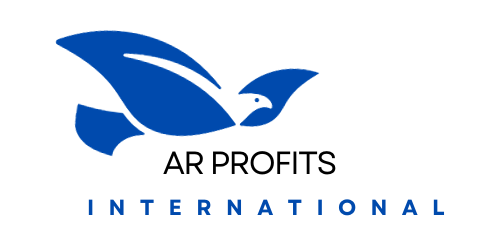Monetize Blogging With Google AdSense Or Affiliate Marketing
Let us find out how you can monetize blogging as a luctrative income stream.
Google AdSense is an advertising program designed to make money through placement of advertisements on blogs or websites. Advertisers compete for space through an auction-style system and bid against one another in real-time for placement on your page.
Bloggers frequently utilize Google AdSense alongside affiliate marketing as a revenue diversification strategy, yet even small details can impact whether or not AdSense approves.
Creating a Blog
Blogging is an invaluable way for businesses to engage with customers, generate additional revenue, stay competitive in their industry and promote products and services. But making a blog profitable requires hard work and time – to attract and keep visitors, you must understand how to attract them with posts about what interests them; there are various methods such as ad placements or product sales which could bring you profit as a blogger; either way monetizing is essential for its success as an endeavor.
Blogs are websites that feature regular commentary on a particular subject of interest to their target audience, including fashion, politics or information technology. Blogs typically feature ongoing commentary by their author; their focus could range from fashion or politics to personal lifestyle features like fashion or technology – or anything in between! Bloggers choose their domain names themselves and write engaging posts that build audiences while simultaneously building brands over time.
Prior to launching a blog, it is crucial that you research your audience and discover what type of content will resonate with them. Successful blogs offer readers educational, informative and entertaining content while featuring an intuitive design for easy reader navigation. Producing such a successful blog may take hard work but reap great rewards –
One of the easiest and most reliable ways to monetize blogging is through advertising. Google AdSense matches advertisements with your blog content and displays them to visitors – earning bloggers money for every click generated by these ads, whether placed in sidebars, posts or gadgets on their blog.
To maximize your chances of approval, be sure that the content on your blog is original and does not use copyrighted images or texts without proper attribution. Google won’t approve sites committing copyright violations so it is crucial that you check before publishing any new posts.
Your name and email address should also be easily visible in areas like your blog’s About and Contact pages to aid the verification process. Once approved, link your Blogger and AdSense accounts together; ads should begin appearing soon after, however they will only feature Google products or public service announcements that don’t pay out money.
AdSense prohibits adult content, drug and alcohol-related material, hacking/cracker content, violent material, weapons-related topics and any inappropriate themes; while its traffic count approval process doesn’t factor into approval. Therefore, its important that your focus should lie more on creating quality blog content rather than sheer number of visitors.
Applying for Google AdSense
Google AdSense is an efficient way to monetize blogging. Website owners host advertisements on their sites that generate revenue when clicked or page viewed – one of the most popular ways to monetize blogging.
Applying for an AdSense account may seem simple, but there are a few important considerations you need to bear in mind. First of all, you must be 18 or over; have an established online reputation with quality content on your site; and finally be legal resident in your country – once these requirements have been fulfilled you can apply on Google’s homepage for an AdSense account.
Google AdSense is an extremely selective program and will only approve of your application if your blog offers high-quality, unique content and has a large following. In order to maximize your chances of acceptance, create and regularly update a high-quality blog with interesting articles; avoid copyrighted material as this could cause suspension of your account; create all your own original material whenever possible!
Note that to receive payment from Google, you must first be legally resident of your country and possess an active bank account that accepts ACH payments (you can also create a PayPal account to facilitate easy payments). Moreover, it’s also essential that you are familiar with their Advertising Policies and Terms of Service before trying your luck!
Start to monetize blogging today by opening a Google AdSense account – one of the world’s premier ad networks that millions of websites already use to earn passive income through advertisements on their websites or blogs. Plus, its free use provides another means of passively earning passive income!
For Google AdSense accounts to work effectively, they require at least 10 quality articles on a blog or website in order to meet their minimum threshold of $100 per month in traffic generation. Furthermore, ensure your blog has an intuitive design with easy navigation capabilities.
Once you’ve created your blog, the application process for Google AdSense can begin. You will need to provide some personal data such as your name, address and phone number before agreeing to their Terms of Service and Privacy Policies.
Once you’ve submitted an application to Google, they should review it within a day or so and contact you if there are any queries via email or phone. It’s important not to rush this process – although waiting can be frustrating, it is better if your blog meets all requirements before applying.
Embracing Affiliate Marketing
If you prefer not to include ads on your blog, there are still numerous ways you can monetize your writing. One such approach is affiliate marketing: this performance-based form of content creation pays you when someone clicks through an affiliate link and makes a purchase; as more sales you generate increase your commission rate.
To effectively implement affiliate marketing on your blog, it’s essential that you first gain an understanding of who your audience is. Tools like social listening, site analytics and customer insight can help identify products which resonate with them; once this knowledge has been acquired, relevant affiliate links can then be created and integrated into blog posts and social media posts accordingly.
To maximize affiliate revenue, select merchants with an excellent pay-per-conversion rate. Some merchants offer flat-rate commissions while others may reward you on a pay-per-lead basis if someone signs up through your link. Also take into consideration average order value (AOV), which measures how much visitors spent when making single purchases from your site – more AOV is always better!
Implementing affiliate marketing on your blog is made easier when added to your mailing list, enabling you to share product recommendations more directly and targeted at your audience. A service such as ConvertKit – used widely among bloggers and small businesses alike for email newsletters, landing pages and automation – offers affiliates who promote the program a 30% commission when any new customers subscribe via their link.
One way to enhance affiliate marketing is to build real relationships with the merchants you’re promoting, which will allow you to learn more about their product, as well as which types of messaging work best with them and make more sales per transaction. Plus, creating these connections could lead to improved commission rates or even free products!
Start by meeting merchants at industry conferences or through their website contact pages; this will allow you to discuss how their products address pain points of your target audience and build trust between both of you.
Finally, it is crucial that you regularly monitor your affiliate revenue. If your blog isn’t producing enough income, this could be a telltale sign that its strategy needs some tweaking; therefore, revising and testing out various tactics may be required to generate sufficient cash flow. You could use tools like Google Analytics or Search Console and run reports every month on how it performs; doing this can help identify any weak spots and eventually enhance revenue generation on the blog over time.




